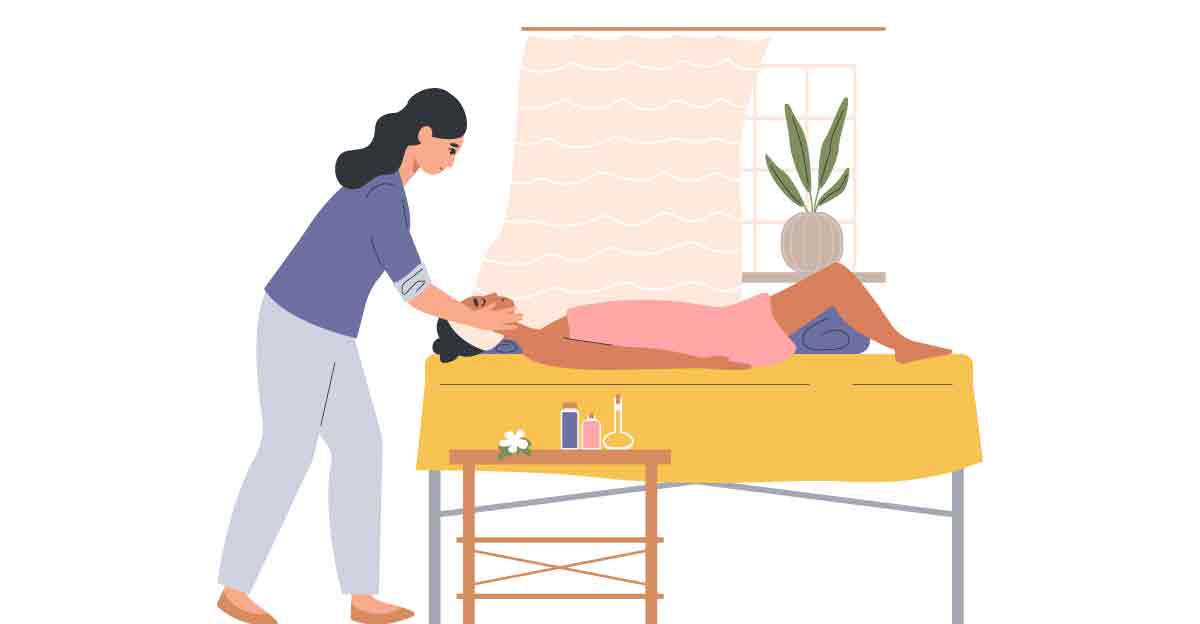10 Things Your Massage Therapist Wants to Know Before Treating You
6 August 2024
Indulging in a relaxing massage is a cherished treat for many. A massage can work wonders if you're seeking relief from chronic pain, aiming to unwind after a stressful day, or simply desire a moment of pure indulgence. However, to maximize the benefits of your session, it's essential to provide your massage therapist with the necessary information. By sharing crucial details about your health and preferences, you can help your therapist tailor the treatment to your specific needs and ensure a truly transformative experience.

In this article, we will explore ten vital pieces of information that your massage therapist eagerly wants to know before treating you. By understanding these key points, you can contribute to a more effective and enjoyable massage session.
The Importance of Open Communication
A successful massage relies on open and honest communication between you and your therapist. Your therapist is a trained professional dedicated to your well-being, and they want to provide you massage with the best spa in Rajapark . By sharing relevant information, you empower your therapist to create a customized treatment plan that addresses your specific concerns and goals.
10 Things Your Massage Therapist Wants to Know
1. Your Medical History:
● Chronic conditions:
Do you have any ongoing health issues such as arthritis, diabetes, high blood pressure, or heart problems?
● Injuries or surgeries:
Have you recently experienced any injuries, surgeries, or fractures?
● Medications:
Do you currently take any prescription or over-the-counter medications?
2. Your Massage Goals:
● Pain relief:
Are you seeking relief from specific pain points, such as a stiff neck or lower back pain?
● Relaxation:
Do you desire a deeply relaxing massage to unwind and reduce stress? The first step will be searching relaxing massage near me.
● Injury recovery:
Are you recovering from an injury and need a therapeutic massage to aid in healing?
3. Your Preferred Pressure:
● Light, medium, or deep:
How much pressure do you prefer during the massage?
● Areas of sensitivity:
Are there any areas of your body that are particularly sensitive or tender?
4. Your Massage Preferences:
● Massage styles:
Do you have a preference for specific massage techniques, such as Swedish, deep tissue, or hot stone?
● Aromas:
Are there any scents or essential oils that you particularly enjoy or dislike?
● Music:
Do you prefer silence, soft music, or specific types of music during your back massage therapy?
5. Your Current Physical Condition:
● Muscle tension:
Are there any areas of your body that are particularly tense or sore?
● Range of motion:
Do you have any limitations in your range of motion?
6. Your Lifestyle:
● Occupation:
What is your occupation, and does it involve physical exertion or prolonged sitting?
● Exercise:
How often do you engage in physical activity, and what type of exercise do you prefer?
● Stress levels:
How would you describe your overall stress level?
7. Your Expectations:
● Desired outcomes:
What are your expectations for the back-to-back massage therapy? Do you hope to feel relaxed, pain-free, or energized?
● Previous massage experiences:
Have you had massages before, and if so, what did you like or dislike about them?
8. Your Communication Preferences:
● Verbal feedback:
Do you prefer to provide verbal feedback during the massage to indicate areas of discomfort or preference?
● Non-verbal cues:
Are you comfortable communicating your needs through non-verbal cues, such as body language?
9. Your Comfort Level:
● Draping:
Do you have any preferences regarding draping during the massage?
● Environment:
Are there any specific environmental factors that would make you feel more comfortable, such as temperature or lighting?
10. Your Availability for Follow-up:
● Contact information:
Can your therapist contact you after the massage to follow up on your progress or provide additional recommendations?
● Scheduling future appointments:
Would you like to schedule a follow-up head and back massage or discuss potential treatment plans?
The Benefits of Open Communication
By sharing this information with your massage therapist, you create a foundation for a truly personalized and effective spa back massage treatment experience. Your therapist will be able to tailor the treatment to your specific needs, addressing your pain points, promoting relaxation, and helping you achieve your desired outcomes.

Open communication also fosters a trusting relationship between you and your therapist. Your therapist wants to ensure your comfort and satisfaction, and by sharing your preferences and concerns, you empower them to provide you with the best possible care.
Additional Tips for a Relaxing Massage Experience
● Arrive early:
Arriving a few minutes early allows you to unwind and prepare for your massage.
● Hydrate:
Drink plenty of water before and after your massage to help flush out toxins.
● Wear comfortable clothing:
Choose loose-fitting clothing that is easy to remove and put on.
● Communicate throughout the session:
Don't hesitate to let your therapist know if the pressure is too strong or too light.
● Relax and enjoy:
Let go of any stress or tension and allow yourself to fully relax during the massage.
Conclusion-
A massage is a personal experience, and your comfort and satisfaction are the top priorities of your massage therapist. By taking the time to share your information and preferences, you can enhance the benefits of your massage and create a truly blissful experience.